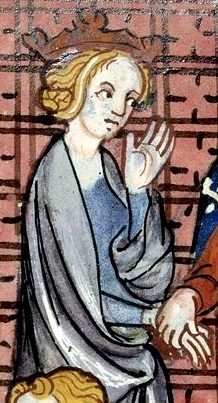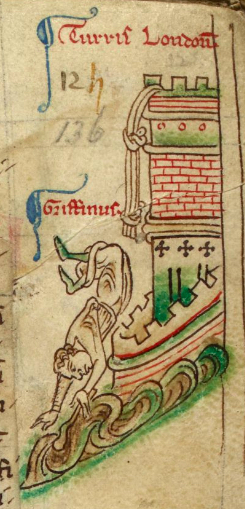On this day, March 7, 1578 ~ Demise of Margaret Douglas, Countess of Lennox
Daughter of Margaret Tudor and Archibald Douglas, 6th earl of Angus. Margaret was born in England where her mother had fled for safety, as her marriage to Archibald was unpopular to say the least. Her Uncle, Henry VIII, offered his pregnant sister sanctuary in England.
Margaret was a lady in waiting to Anne Boeylyn. She fell in love with Anne's Uncle, Lord Thomas Howard (Not the duke of Norfolk). Anne's grandfather Thomas, 2nd Duke of Norfolk had a son named Thomas from each of his two wives. Lord Thomas was his second son from his second wife Anne Tilney (Duke Thomas, Edmund who was father of Katherine Howard, and Elizabeth who was mother of Anne and Mary Boeylyn were children of their father's first marriage to Elizabeth Tilney). The two Thomases were not only half brothers but doubly related. Anne and Elizabeth were cousins (their husband had to get special dispensation to marry Anne following the death of her cousin).
When Anne fell from power, Margaret was high in the line of succession. Her Uncle was furious when he found out of her engagement and locked both her and Thomas in the tower. Thomas was sentenced to be executed but he was spared. He died in the tower though, even after Margaret ended it. There is suspicion the two of them had a son who was raised in one of the Howard homes. Margaret was forced to denounce her love for Thomas, but surviving letters between the two show a real love that was divided by the king.
She was sent to greet Anne of Cleves on her arrival in England. She had an affair with another Howard, this time her former fiancé (possibly husband)'s nephew Sir Charles Howard. Charles was a brother of Katherine Howard. She remained at court and was named a chief lady to Catherine Parr who she had been friends with since they came to court around the same time. She was one of the few guests at their wedding.
Margaret went on to marry Mathew Stewart, Earl of Lennox who was in exile. Of their nine children, two sons reached adulthood. Her father appealed to her when two of her half-brothers ended up prisoners of the English.
During the reign of Mary I she continued to have a place at court and was a chief mourner. Elizabeth though disapproved of the marriage between Margaret's son Henry and Mary Queen of Scots, and Margaret was imprisoned for a time. After her son died she was released from prison. She made eventual peace with her daughter in law.
Margaret did not remain out of trouble very long during her life time. Her husband was assassinated in 1571. 3 years later she angered the queen a second time, and once again wound up in the tower, after she married her second son Charles to Elizabeth Cavendish. Elizabeth was the stepdaughter of the Earl of Shrewsbury. Elizabeth was the daughter of Bess Hardwick and was a lady of the bedchamber to the queen. The queen was furious at the two mothers for arranging such a marriage without her permission.
Charles died from TB in 1576, when his daughter Arbella was only a year old. Margaret had a hand in raising her granddaughter until her own death.
The record of marrying without permission would fall on Arbella as well. She was 4th in line for the throne and her marriage was seen as a threat. She married William Seymour who later became the 2nd Duke of Sommerset. They were imprisoned but managed to escape. Arbella's ship though was caught on the way to France and she ended up in the tower of London where she died from illness caused by a hunger strike. William was 6th in line for the throne, being a grandson of Katherine Grey (sister of Jane of the 9 days). His father Edward was actually born in the tower of London, where his own parents Katherine and Edward Seymour were imprisoned for (not shocking considering the others) marrying without royal consent. William would go on to have a political career following the death of Arbella. He married Frances Deveraux, daughter of the Earl of Essex and Frances Walsingham (daughter of Elizabeth I's famous advisor), and had eight children with her.






